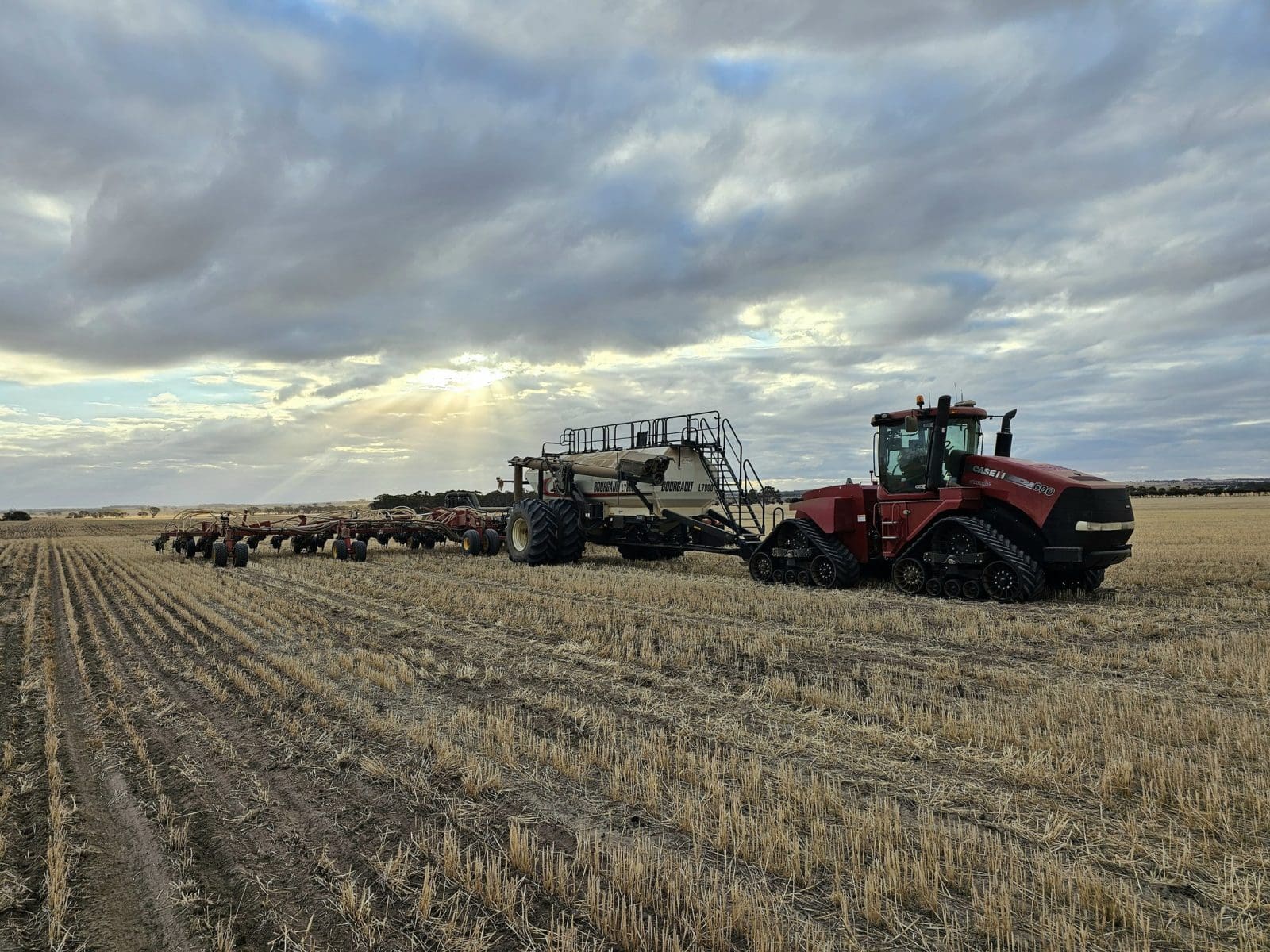
WA sowing is well advanced and some growers have had welcome rain in recent days.
DEMAND from exporters has lifted values for wheat and barley in the New South Wales and Queensland markets this week.
Tempering the rise in values is modest demand from domestic consumers, some of whom are close to fully covered for the upcoming quarter.
Selling from growers is limited, as the pace of sowing ramps up in most regions amid mixed moisture profiles, with dry in Western Australia and South Australia particularly being of concern.
| Today | Apr 25 | |
| Barley Downs | $410 | $405 |
| ASW wheat Downs | $408 | $395 |
| Sorghum Downs | $352 | $353 |
| Barley Melbourne | $355 | $352 |
| ASW wheat Melbourne | $370 | $363 |
Table 1: Indicative prices in Australian dollars per tonne.
Northern planting accelerates
Growers in southern Qld northern NSW have started planting wheat to open their winter cereals program now that the traditional start date of Anzac Day, April 25, has passed.
Many are also still harvesting sorghum and picking cotton ahead of rain forecast for the weekend.
Traders say stocks of on-farm winter grains are low, and the small number of consumers chasing prompt deliveries has had to look south to central NSW for loads.
“Wheat as well as barley is getting hard to find locally now too,” one trader said.
Sorghum is being sold in small amounts, with moisture in the atmosphere limiting harvesting windows to a few hours per day.
Some growers have opted not to chase better-quality specs from their rained-on sorghum, and are selling it with high moisture and/or high sprouting in order to get it off farm ahead of winter-crop sowing.
“There a little bit of Sorghum 1 and 2 trickling into the market; it’s more of a ‘small bites’ project this season.”
Traders report some discrepancy between bulk handlers and packers as to what constitutes sprouting in a sample, another reason for growers to be slow to offer up rain-affected sorghum.
Most growers in southern Qld and northern NSW are sowing winter crop into ideal moisture profiles, and some have started to trade their first parcels of new-crop wheat at around $380/t delivered Downs, and barley at $385/t.
“Liquidity is very low,” another trader said.
Traders report some feedlots have not bought a load of grain since mid-March, and could be sitting out of the market until July, with good pasture available throughout much of the region.
On cottonseed, the delivered Downs market is sitting at around $500-$510/t, the ex gin Moree market is $460-$465/t and ex Namoi Valley is $450-$455/t.
“It’s been a slow start to ginning, but northern gins are starting to get going,” Woodside Commodities managing director Hamish Steele-Park said.
“Seed values are rangebound, and activity in the market is down on previous weeks.”
“Domestic buyers are not overly active, and the China holiday this week is keeping exporters at bay also.”
South looks for rain
In contrast to Qld and central and northern NSW, conditions are dry in parts of southern NSW, Victoria and South Australia.
Most growers are pressing ahead with planting, with canola and pulse programs well advanced, particularly in areas where dry sowing is the norm.
Riordan Grains general manager Mark Lewis said Vic’s Western District is the state’s driest, and regions generally could do with 10-15mm of rain to wet the topsoil.
“Generally speaking, I reckon they’re about halfway through planting,” Mr Lewis said.
Some forecasts are throwing up rain in mid-May for southern Australia, which would be ideal, and is badly needed in Western Australia and northern parts of SA.
At Young, Grain Focus managing director Michael Jones said growers on the south-west slopes have mostly planted their canola and pulses, and are moving on to cereals.
“On forward sales, they’re sitting on their hands.”
Current-crop stocks of warehoused canola are believed to be low as the export program out of Port Kembla kicks along.
“There’s some wheat left, and barley’s getting hard to find.”
Mr Jones said consumers appeared to have extended their coverage into the second half of the year.
“If they see another dip they’ll cover right through to harvest.
Grain Central: Get our free news straight to your inbox – Click here



HAVE YOUR SAY